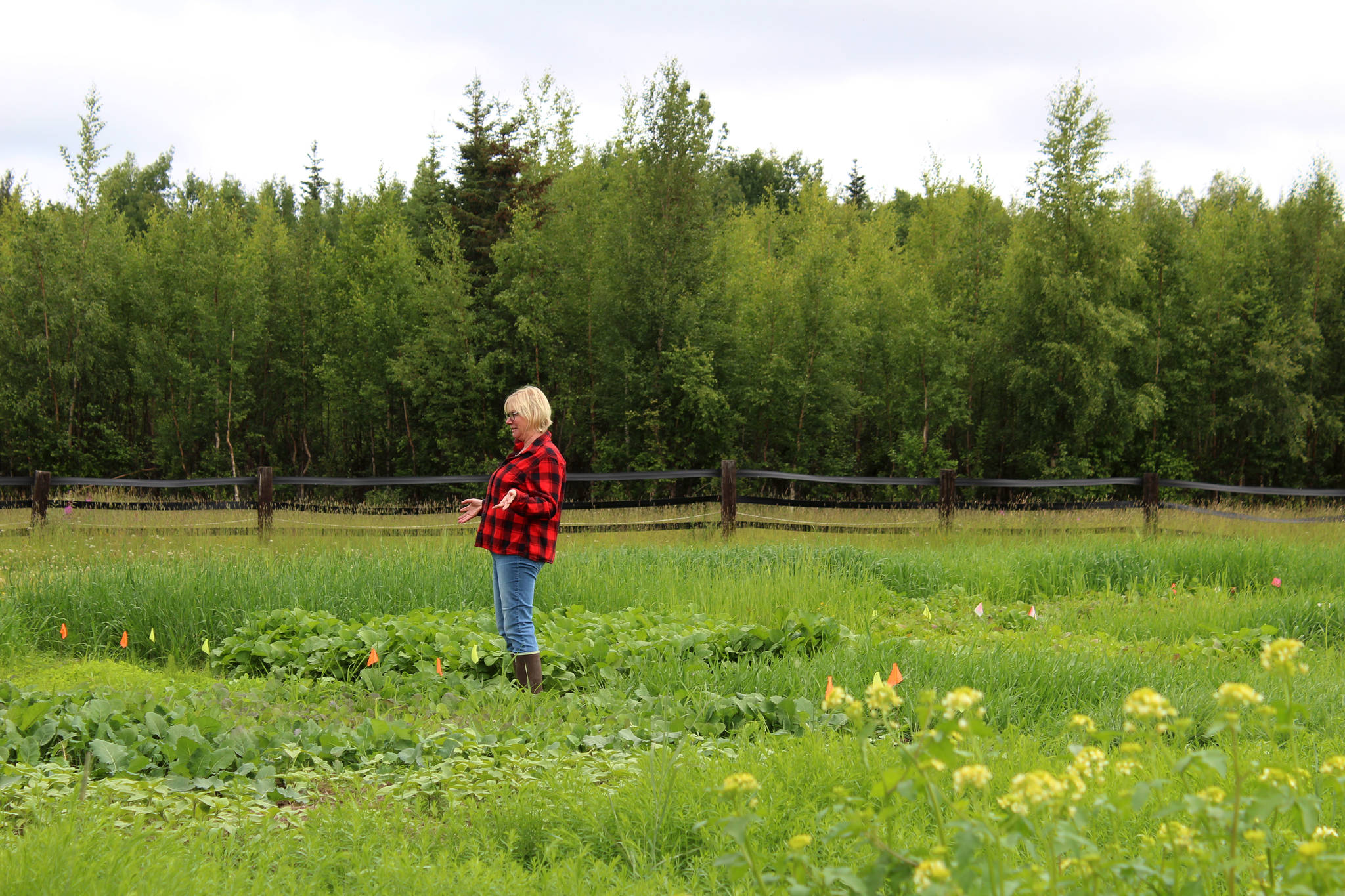In a field at the end of Deville Road near Sterling on Friday, staff of the Kenai Soil & Water Conservation District wandered between carefully flagged squares of land laid out in a grid.
The grid was created as part of a statewide study aimed at assessing how different cover crops perform in regions throughout the state. In the conservation district’s trial field, there are 23 types of cover crops representing categories like barley and oats.
The varying rates of success are apparent. Next to a fluffy section of flax, for example, are scraggly sunflowers that have grown mere inches out of the ground. The crops were planted from seeds about eight weeks ago and have been meticulously and methodically studied by the district with help from their intern Raven Patrick, who is currently studying biology in college.
After two months of data collection — including averaging the height of different plants in the same block and tracking the impact of weather — Patrick said she’s noticed a trend.
“It’s definitely the grass-looking ones (that) seem to be doing the best,” Patrick said. “I mean, you can just tell height-wise — they took up the entire plot.”
In working on the district’s own trial field, which sits on privately owned land, Patrick said they tried to keep the environment as natural as possible. That included weeding the 2-foot gaps between blocks, fending off hungry moose and relying on rain as a water source for the plants.
“The idea of a cover crop is that you don’t want it to suck up all the nutrients like dandelions,” Patrick said. “You want it to just kind of live there [and] push out all the weeds so that way whatever you’re growing underneath does well.”
According to the U.S. Department of Agriculture, cover crops are managing soil nutrients and are usually planted in the late summer or fall and before spring planting. Under the ground, cover crops increase the amount of organic matter in soil, add living roots during more months of the year and improve soil’s water filtration. Above the ground, cover crops track excess nitrogen, protect soil from erosive wind and rain, provide grazing opportunities for livestock and offer wider food options and cover for birds.
“The best crop productivity occurs in healthy, active soils,” reads one handout created by the USDA. “ … Microorganisms help cycle nutrients, making them more available to your crops — so creating a good home for them means your crops will also grow better.”
The benefits of cover crops were similarly echoed by Kenai Soil & Water Conservation District Manager Teri Diamond, who began working with the district in May.
“There’s a lot of benefits to the soil,” Diamond said of the cover crop process.
The cover crops will be removed from the field next week for further analysis, such as biomass, and will mark the end of the district’s participation in the two-year project. Overall, the field served its purpose as a research tool.
“I’m impressed with how well it did,” Patrick said.
More information about cover crops can be found on the USDA website at nrcs.usda.gov.
Reach reporter Ashlyn O’Hara at ashlyn.ohara@peninsulaclarion.com.

